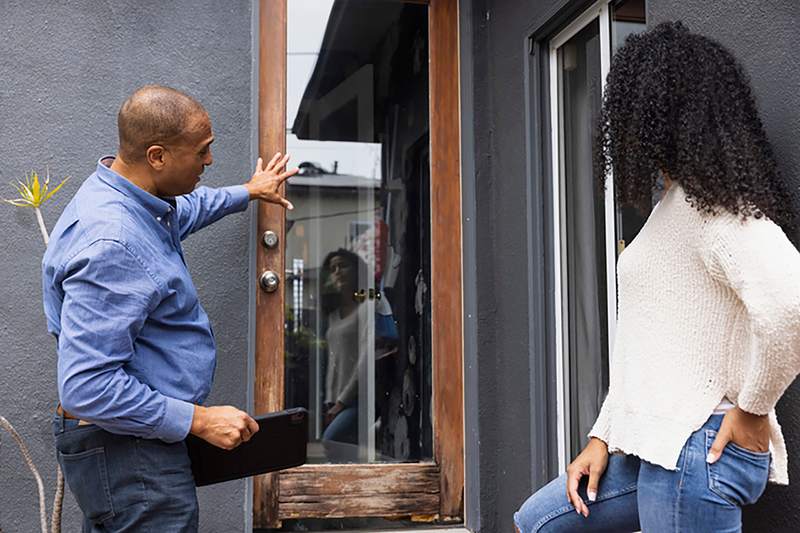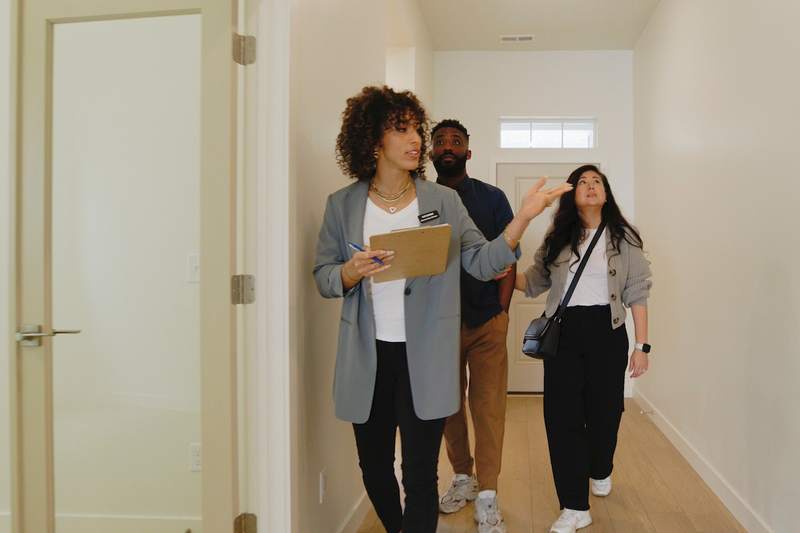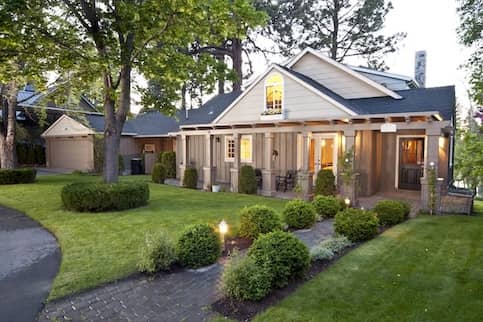For those with a disability, finding the right rental situation or buying the right home comes with its own unique set of challenges. For example, if you’re renting, you might have a hard time finding an apartment or home that works for you and you might have to push the landlord. If you’re buying a home, move-in readiness and your budget for modifications will come into play.
This article will go over how to find the right accessible housing to accommodate your disability. Along the way, we’ll go over what you need to know and hear from some members of the disabled community who can share their experiences in terms of what they were looking for in a home as well as some of the challenges they’ve experienced.
For those of us who live with a disability, life does present challenges that we’re used to fighting through. However, that makes finding a situation where you can thrive and live your best life that much more gratifying. Finding an appealing rental and even your dream home may be a journey, but it’s possible. Every journey has a first step, and hopefully this article is that for some of you.
What Is Accessible Housing?
A quick Google search will show that definitions of accessible housing from a legal perspective can vary quite widely. If you have a disability, you know the housing that’s accessible for you can be hard to put into words, but when you’ve found the right situation, you know it when you see it. Still, a definition should be attempted so that we have a baseline understanding to work from.
Accessible housing, whether built and designed that way or modified to be that way after the fact, is made to support increased or total independence in activities of daily living for those with disabilities.
The term disability covers a wide spectrum: Although many people first think of those with a physical disability, it’s equally important to know that life altering issues can come from vision and hearing impairments as well as cognitive disorders and chronic illnesses. What works for one person shouldn’t be automatically expected to work for anyone else.
Now that we know why coming up with one working definition is so difficult, let’s go over what you need to know if you’re trying to find accessible housing of your own. The next section will go over renting, and later, we’ll get to buying.
See What You Qualify For
Buy A Home
Discover mortgage options that fit your unique financial needs.

Refinance
Refinance your mortgage to have more money for what matters.
Tap Into Equity
Use your home’s equity and unlock cash to achieve your goals.
Renting An Accessible Apartment Or Home
Renting an accessible apartment or home can be a great way to go when you first consider getting your own place for one big reason: You have legal rights. You might have to fight for them, but it’s certainly a good start.
Know Your Rights
The Fair Housing Act was designed to afford equal opportunity at home accommodations by prohibiting and laying out penalties for discrimination against members of protected classes. One of those protected classes includes people with disabilities.
Unfortunately, just because there is a law doesn’t mean that everyone follows it. Of the consent orders and conciliation agreements entered into by the Department of Housing and Urban Development (HUD) in order to enforce the Fair Housing Act in 2019 – 2020, at least five directly mention disability. To put that in perspective, in all of 2020, there were 13 charges leveled. Given this proportion, five disability-related charges is a significant number.
You should know what your rights are going in so that you can recognize when you’re being treated inappropriately as well as protect your interests. While landlords can ask if you meet basic tendency requirements and if you qualify for apartments that they may make only available to people with disabilities, they can’t ask questions like the following:
- Do you have a disability and what’s your diagnosis?
- What are the limitations caused by your diagnosis?
- How might your disability affect your income and ability to pay rent?
- Do you require a wheelchair?
- Do you take medications?
- What kind of medical history do you have?
In addition, multifamily buildings like apartment complexes have to have accessible housing features for those with disabilities if they were built for first occupancy after March 13, 1991. This is given the force of law by not only the Fair Housing Act but also the Americans With (ADA) Disabilities Act and Section 504 of the Rehabilitation Act of 1973. There are construction guidelines.
You also have a right to reasonable accommodations that make accessing and utilizing the features of your home easier and give you an equal opportunity for enjoyment as someone with a disability.
It’s important to note that a housing provider is legally allowed to deny your request for accommodations if making such accommodations places an unreasonable financial or administrative burden or would fundamentally change the nature of the operations for the provider.
As you can probably see, that standard could be subject to interpretation. In the worst-case scenario, lawyers might have to get involved and file lawsuits. Hopefully it doesn’t come to that, but be aware you may have to fight for your rights.
Ask Tough Questions
ADA standards are one thing, but what you actually need to create a practical, productive and comfortable space is another. Since everyone has different experiences with disability, you’ll need to be your own best advocate on your behalf. With that said, here are some questions you can ask around various types of disability to determine whether an apartment or home is suitable for you:
Physical And Mobility-Related Disabilities
- Are the hallways and doorways (interior and exterior) wide enough for my wheelchair? Technically, ADA standard doorways are 32 inches wide for residences, but you may find that wider is better. Everyone who used a wheelchair in a survey for this article said that wider doorways are key. One thing to think about is that the 32-inch measurement assumes the door is fully open. If you’re trying to push or pull and go through the door at the same time for the sake of your reach, that won’t always be the case.
- Can you use the door handles? If you can’t use a standard door handle, can that be modified at all or changed to an automatic door with a button for the doors you use most. Levers or push doors also help some people.
- Are the counters and cabinets at the right height? If you use a wheelchair, it can be really important to have roll under countertops and you also want cabinets with the things you use most to be down lower. You also should have the same considerations for rolling up to sinks and stove tops. In an ideal world, you can roll right under these.
- If the apartments are on more than one level, is there an elevator? Whether you want to see neighbors or go downstairs to do the laundry, it will be important to know whether there’s an elevator or available stair chair.
- Are there appropriate accommodations for the bathroom? Depending on what you’re looking for, this could be anything from grab bars to roll-in showers. It could also be things as simple as nonskid mats.
If you’ve looked into this before, you might know that some of this goes beyond ADA recommendations, but that’s because there really is no one-size-fits-all solution. When you evaluate apartments, you need to know what works for you.
Hearing Impairments
- How wide are hallways? No, we didn’t accidentally copy and paste this from the last section. Those who communicate primarily through American Sign Language (ASL) will know that it’s a very expressive language which involves a lot of bodily movement. You really want to make sure that the spaces are wide enough for at least a couple of people to have a conversation in passing.
- How are the acoustics? If you have partial hearing or use something like a cochlear implant, it can be helpful to know how the acoustics are. Hardwood tends to carry sound further, but then other people have trouble with echoes, so it’s something that’s going to be about you personally again.
- How are the sightlines? Sightlines could be very important, particularly if you have to be able to visually communicate with someone or see a light tied to the doorbell or fire alarm.
- Can you get visuals for audio signals? Does the fire alarm system have a light on it so that you’re notified if you need to get out? If someone rings the doorbell or Knox on the door, can you be notified via some sort of paging system or your smartphone with the aid of specially-installed hardware?
Vision impairments
- Are the floors cleared of things out in the open they could create a tripping hazard? Whether you have low vision or outlined and walked with a cane, you want there to be plenty of clear paths. There should be nothing too close to corners so that you rent into things when making a turn into a new room.
- Navigation: If you’re blind, are signs and other waypoints translated into braille or is there an audio readout of some sort? Alternatively, maybe there’s a change in the texture of the floor that could let you know where you are.
- Lighting: If you have low vision, strategically placed bright lighting could help you make your way through the world. Along the same lines, you might ask them what products they clean with because some cleaners are prone to create more glare on surfaces than others.
General
One of the key things you’re going to want to ask is what happens in the event that something you use it as an accommodation for your disability breaks? If the automatic door isn’t working one day, how long will it take them to get someone out to fix it. In the meantime, is there someone you can call to get the door for you? What’s the backup plan if the elevator goes out?
These are questions people with various kinds of disability have to be mindful of regularly, but the questions you ask will depend on your situation.
Trina Robertson, a wheelchair user with brittle bone disease brings up that location can play a big role as well. Many with disabilities rely heavily on public transport and try to find homes around those hubs.
“We have limited choices to rent accessible homes that will allow us to get to and from work, hospitals, etc.” she said.
Make Use Of Organizations
Making modifications or finding the resources you need to live independently can be difficult. With that in mind, there are some ways you can make use of organizations and government programs that are dedicated to helping the disabled, among other groups. Here are a few options you can take a look at:
- Veterans with service-related disabilities should look at assistance through the Department of Veterans Affairs (VA). There are a couple of adaptive housing grants available specifically for disabled veterans.
- The United States Department of Agriculture (USDA) rural rental assistance program offers multifamily housing rental affordably to elderly, disabled and low-income rural residents.
- With chapters in several states nationwide, Accessible Space connects people with accessible, affordable housing. Moreover, there are some areas where they provide in-home assistance services, which can help remove a major barrier for many who are looking for housing.
- You may be able to find programs in your state aimed at assisting the disabled through state housing authorities and health departments. It’s important to note that some of these programs may be means tested, and we’ll get into how to deal with that in a second.
- You can also look for local nonprofits who work in the housing space to help you with modifications that might be needed and building that needs doing. Two organizations that have a national profile are Habitat for Humanity and AmeriCorps.
- There are also organizations that work specifically with people who have certain conditions. Don’t be afraid to look up any that fit your situation.
Many programs that are offered have income limits, so they can be a challenge. Many state programs are also contingent on the beneficiary being eligible for programs like Supplemental Security Income (SSI) and/or Medicaid/Medicare. These programs have income limits in themselves. What’s more, private insurance often doesn’t cover what’s needed.
One resource that has been rolled out in many states is the ABLE account. These accounts are a type of 529 plan in which beneficiaries aren’t taxed on withdrawals for qualified expenses including things like medical bills, transportation, assistive technology and even housing.
What’s even better about these accounts, though, is that up to the first $100,000 you put in them doesn’t impact your eligibility for SSI and Medicaid/Medicare. It should be noted that there are some special rules when it comes to using these funds for housing expenses. It’s not a bad idea to speak with a financial advisor specializing in special-needs planning who can keep you abreast of the latest guideline changes and options.
Make Use Of Social Networks
Those of us with a disability know that we often rely on each other for a sympathetic ear and support as well as all kinds of tips and tricks. I know some of you have secret handshakes.
Facebook and other social media platforms are the grapevine of the 21st century. Kelli Strucienski, who lives with Guillain-Barré syndrome, can attest to this.
“While I haven’t utilized any tips, I do belong to a GBS support group where people frequently speak about the resources and tips and tricks that have helped them,” she said. “Talking to people who are dealing with the same condition you are will definitely help in many ways, as you will often be shown ways others cope.”
Find A Mortgage Today and Lock In Your Rate!
Get matched with a lender that will work for your financial situation.
Buying An Accessible Home
Deciding to eschew renting and buying an accessible home has its advantages. You can customize your home to meet your needs based on your individual situation. On the other hand, you need to pay for your own accommodations. The rest of this article will go over what you need to think about as you’re looking for a home.
Decide What You’re Looking For
When it comes to designing around a disability, there are a couple of schools of thought: universal design and accessible or adaptable design.
Universal design principles are things that make life better for everyone in the house, including those with a disability, seniors aging in place, children or anyone else. Here are a few examples of universal design:
- Lower light switches
- Higher electrical outlets
- Open concept floorplans with more room to maneuver
- Larger bedrooms and bathrooms
- Countertops at various heights
- Elimination of steps into the home or between rooms
Accessible or adaptable design takes things a bit further, adapting your home for your disability. Although others may benefit from these features, there are especially useful for the person with a disability. Here are a few examples of that:
- People who use wheelchairs like doorways a little wider, it’s not a bad idea to go as wide as 36 inches if you have the room. Pocket or barn doors that slide open can be easier for a disabled person to use, and they take up less space.
- Jane Ugrinovskiy’s partner uses a wheelchair. They have a wish list for the kitchen and backyard. “We’d like to add a roll under sink, update our entire kitchen to be accessible for her to cook in (roll under counters, roll under sink, larger space to turn around), and remove some of the carpeting throughout the house,” she said. “We’d also like to add a ramp to the back porch and stone walking paths in the yard.”
- Smart tech can serve purposes from multiple disabilities. For those with focus or memory issues, automated reminders rock. A smart security system has benefits like being able to alert those with hearing issues with a push notification. Smart assistants like Alexa can be connected to everything from lights and entertainment systems to blinds.
- Sometimes the best solutions are new spins on solutions that have been around for a while. Most smart TVs sold now allow you to hook up Bluetooth headphones. This and subtitles or close captioning can enable those suffering from posttraumatic stress disorder (PTSD) triggered by loud noises to be able to enjoy entertainment at a comfortable level.
A word of warning on connected smart tech before we move on. When it works, it’s great. When the connection breaks, it’s best to see if you can find a system that still lets you do things like open your blinds the old-fashioned way. My project with my caregiver this weekend is to fix the connection to my bay window, which won’t open as of this writing. What a wonderful, connected world we live in that I can write a sentence griping about my blinds not opening themselves.
Whatever design philosophy or mix you end up going with, it’s important to note that you’re the foremost expert on your capabilities, so sit down and make a list of your needs and nice to haves. Even if you can’t check them all off right away in a home and you have to do things over time, this will help you plan toward your ideal state.
Consider Input From An Occupational Therapist
Occupational therapists help people with disabilities or rehabbing from injuries or surgery to hone their skills and figure out the best ways to complete activities of daily living. This could be everything from writing a signature and feeding themselves to strategies which enable them to handle cooking, cleaning and getting back on the job.
When you’re considering modifications that may need to be made to your home, input from an expert who regularly assesses living situations to problem solve and help come up with strategies and supports which increase your quality of life and independence is so valuable.
People often think to speak with their medical provider, but it’s important to remember many people have a care team. Occupational, physical and speech therapists may have ideas that can help you out. They may also have connections to organizations that help people pay for modifications and equipment that may be needed
Find The Right Real Estate Agent
Finding the right real estate agent is a big help to any home buyer, but it could be even more beneficial for a disabled client if they have experience searching for accessible homes and know what they’re looking for based on your level of ability.
There are the usual interview questions you can ask any real estate agent to get an idea of their experience inquiring how long they’ve been doing this and how many homes they’ve helped clients purchase in the last year along with how often they’ll communicate with you during the search process. But in addition, you should mix in questions about their experience with accessible housing.
- How many disabled clients have they worked with in the past?
- Do they have any special trainings or certifications?
- Ask them what they would look for if they were in your position to see if it lines up with your expectations.
Try Out Accessibility-Focused Listing Sites
Once you know what you want, you’ve consulted experts and found a real estate agent, it’s time to go searching. This is where things get tricky. Many mainstream sites don’t feature an easy way to sort by accessibility features. That said, there are a couple of sites you can take a look at.
Barrier Free has pretty good nationwide coverage. There’s also Accessible Properties and Wheelchair Accessible Homes. It’s worth noting that with the latter two coverage seems more spotty. You may have luck working with disability focused organizations that might know of listings or relying on your real estate agent.
It’s worth noting that fields for inputting information on the accessibility of homes are included in the multiple listing service (MLS) used by real estate agents. In the future, more home listing sites may routinely allow you to search for these features as long as the data is populated.
Seek Out Certified Contractors
If you’re making modifications or doing new construction that’s going to require the services of a contractor, you can find specialized contractors may be able to help meet your specific needs from a design and management perspective.
The Living in Place Institute certifies professionals in designing options for all levels of ability. Meanwhile, Certified Aging in Place Specialists are trained to prepare homes for our differing needs as we age. The latter is a certification offered by the National Association of Home Builders (NAHB).
Research Home Improvement Loans
You may have many loan options for home improvements if you’re looking to do some remodeling so that your home better suits your needs. Let’s run through a few of them.
- Cash-out refinance: If you have existing equity in your home, a good option may be a cash-out refinance based on your primary mortgage. You’ll get a lower rate comparatively than you would on a home equity loan or home equity line of credit (HELOC) because it’s still based on the primary lien and poses less risk for lenders. You generally need to leave 20% equity in your home after the cash-out refi. The exceptions are VA loans which allow you to convert your full equity into cash. With that in mind, one of the most important considerations for any option involving your home equity is whether you have enough equity in the home to accomplish your goals by refinancing.
- Home equity loan: A home equity loan may be useful if you really like the current mortgage rate that you have and don’t want to touch it. In this case, you take out a second loan to access equity. It’s important to note that your primary lender holds first-lien position, meaning they get payment first in the event that you default on your home. Because of this, the rate on your second mortgage will be higher to compensate for the increased risk taken by lenders.
- HELOC: A HELOC is a second mortgage, but instead of a lump sum, you have a revolving balance you can draw on during the first part of the loan. During the draw period, you only owe interest on the money you take out and you can put the money back to access it later if you choose. On a 30-year HELOC, the last 20 years are typically the repayment period where you can’t draw anymore, but you owe principal and interest based on a fully amortized loan.
- Renovation loans: A renovation loan allows you to get a regular mortgage rate based not only on the appraised value of the home, but also the value of the home after renovations are completed. You get a contractor and the value of the loan is calculated based on the blueprints and other documentation related to your plans. This can be used to renovate a home you already own or one that you just bought and plan to modify. Common loan options are the Fannie Mae HomeStyle® and FHA 203(k) loans.
Consider A New Construction Home
Sometimes it’s cheaper to build from the ground up with your needs in mind rather than do a ton of remodeling to retrofit a home to be what you need. It goes back to the old adage about fitting a square peg in a round hole. You might be able to do it, but by the time you get done, how much of the original shape is left?
If you build your house, you can design it to your exact specifications. For many people, the best way to find a home that’s going to work for them throughout their lives is to make one. Before you get started with your application though, here’s what you need to know.
- These are short-term loans. Construction loans are short-term and meant to cover the building of the house. Once construction is completed, they either need to be converted or completely refinanced into a permanent loan. If it’s the latter, it’s a separate application process.
- You need to have a plan in place. Similar to renovation loans, construction loans are approved based on your blueprints and the cost of contractors, so you should be working with architects and contractors as you’re getting ready to apply so that you can move forward with construction as quickly as possible.
Key Takeaways
Accessible housing has been designed and built or modified in such a way that it supports the independent living capabilities of disabled occupants.
If you’re looking to rent a home, it’s important that you know what your rights are going in and you are able to communicate exactly what you need to your landlord. In many cases, reasonable accommodations can be made, but you may have to fight for them. Ask questions to make sure that this is going to be the right situation for you and don’t be afraid to make use of organizations and social networks dedicated to housing support for the disabled.
If you’re looking to buy an accessible home, it’s a good idea to have a game plan on exactly what you’re looking for. You’re the top expert on your needs, but feel free to seek out the advice of an occupational therapist and other members of your care team.
When it comes to looking for that elusive house, you should seek out a real estate agent with experience in finding accessible homes. There are also home listing websites focused on accessibility, although the selection may be somewhat limited.
If you decide a home is going to need modification, you can seek out contractors who specialize in designing and building solutions for accessibility. There are also various options for funding home improvements. If all else fails, building a home yourself will give you the opportunity to fully customize it to your needs, although this route will take longer.
Find A Mortgage Today and Lock In Your Rate!
Get matched with a lender that will work for your financial situation.

Kevin Graham
Kevin Graham is a Senior Writer for Rocket Companies. He specializes in economics, mortgage qualification and personal finance topics. As someone with cerebral palsy spastic quadriplegia that requires the use of a wheelchair, he also takes on articles around modifying your home for physical challenges and smart home tech. Kevin has a bachelor's degree in journalism from Oakland University.












